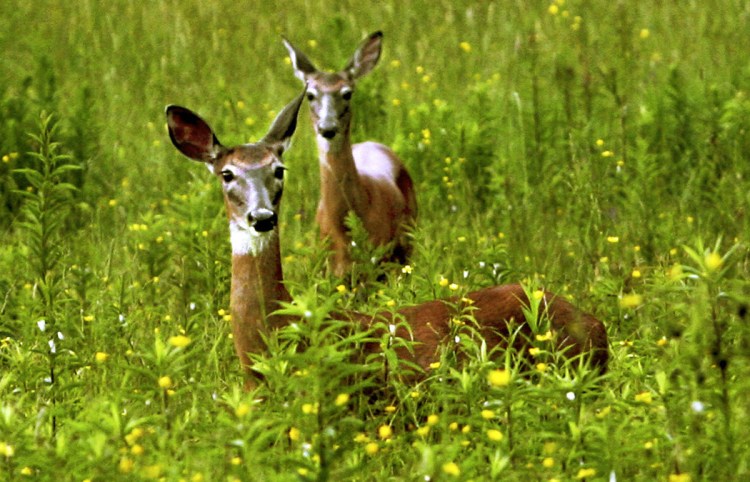Endless hours on a deer stand gives us plenty of time to think and dream. Those thoughts often involve that trip of a lifetime, a guided hunt that could end in the buck of your dreams.
With show season just around the corner, there’s no better time to make that dream become a reality. But before you plop down what could be a substantial deposit on a potentially pricey hunt, I’d like to share some tips, based on my experiences from more than two decades of outfitted hunts, that you might find helpful.
First, decide what you’re after, whether it be a legitimate trophy or merely better odds of filling the freezer. One of the best places to begin that search is the Quality Deer Management Association’s annual Whitetail Report, available at qdma.com/wp-content/uploads/2017/03/WR-2017.pdf. It is the most comprehensive and up-to-date summary of nationwide deer harvest information, including both overall deer kills and proportion of yearling and mature bucks taken in each state.
You might also check the Boone & Crockett and Pope & Young Club’s record books. Once you’ve selected a state or states, you can go to their state wildlife agency website for more detailed geographic information to help refine your destination.
Next, look for an outfitter. You can find them online but shows offer you an opportunity to talk face-to-face. Kick some tires but don’t be hasty. Talk with several outfitters, possibly at different shows.
They won’t appreciate me saying so, but I would not strongly recommend booking a hunt on the spot.
Go home and do some more research. Talk to other outfitters. Talk to other hunters who have been on guided trips and ask for recommendations. Word of mouth is an outfitter’s best friend (or worst enemy), and the proportion of repeat customers can be very telling. You should also get several references from the outfitters and use them to get a first-hand account. They can answer all your questions and may even offer advice on things you hadn’t considered.
A face-to-face with an outfitter will be more productive for both parties if you have a clear understanding of common terminology. The term guided hunt, for example, can have different meanings. Fully guided means an individual guide is responsible for you, though not necessarily just you. They may be responsible for multiple hunters, particularly if they’re hunting from a stand or other fixed location. If you want a one-on-one guide, ask for it. Semi-guided could mean you get dropped off and picked up at existing stand locations, or it could mean you are responsible for your own stands. Ask.
Find out what services the outfitter provides in the way of care of meat and trophy. They may include field-dressing your animal and getting it back to the lodge. They may also include skinning, caping and possibly even processing. Or they may have local facilities they can recommend. Or you might be responsible for all of the above.
Another thing you’ll want to know is your odds of success. Have realistic expectations. No one can guarantee success on a fair chase hunt. But some of my most memorable hunts ended without a kill. Ask the outfitter about the size, quantity and quality of game available, relative odds of success and exactly what that means.
Some outfitters will only claim 100 percent success if every hunter tags out. Others might claim it if every hunter had a shot opportunity. That’s legitimate. Their job is to provide that opportunity. They can’t control what you do with it and shouldn’t be penalized if you elect to pass up an animal or you miss a shot.
Consider the weapons. A 25 percent success rate on a bowhunt is pretty darned good, while you would expect higher from a gun hunt. Ask what is being considered in the outfitter’s assessment. If everyone shoots a doe but only a quarter shoot bucks, is that 100 percent or 25 percent success? And of those bucks, how many are actually trophy class?
If it’s a trophy hunt, ask about minimums. It’s quite common for outfitters to mandate a buck meet minimum standards before you can shoot it – 130 or 140 inches and/or at least 31/2 years old, for example. Last but not least, avoid the optimism filter. Even with the best outfitters, there’s a better than 50 percent chance you won’t shoot the buck of a lifetime. But you might and that’s why we keep going.
Bob Humphrey is a freelance writer and registered Maine guide who lives in Pownal. He can be reached at:
bhhunt@maine.rr.com
Copy the Story LinkSend questions/comments to the editors.



Success. Please wait for the page to reload. If the page does not reload within 5 seconds, please refresh the page.
Enter your email and password to access comments.
Hi, to comment on stories you must . This profile is in addition to your subscription and website login.
Already have a commenting profile? .
Invalid username/password.
Please check your email to confirm and complete your registration.
Only subscribers are eligible to post comments. Please subscribe or login first for digital access. Here’s why.
Use the form below to reset your password. When you've submitted your account email, we will send an email with a reset code.